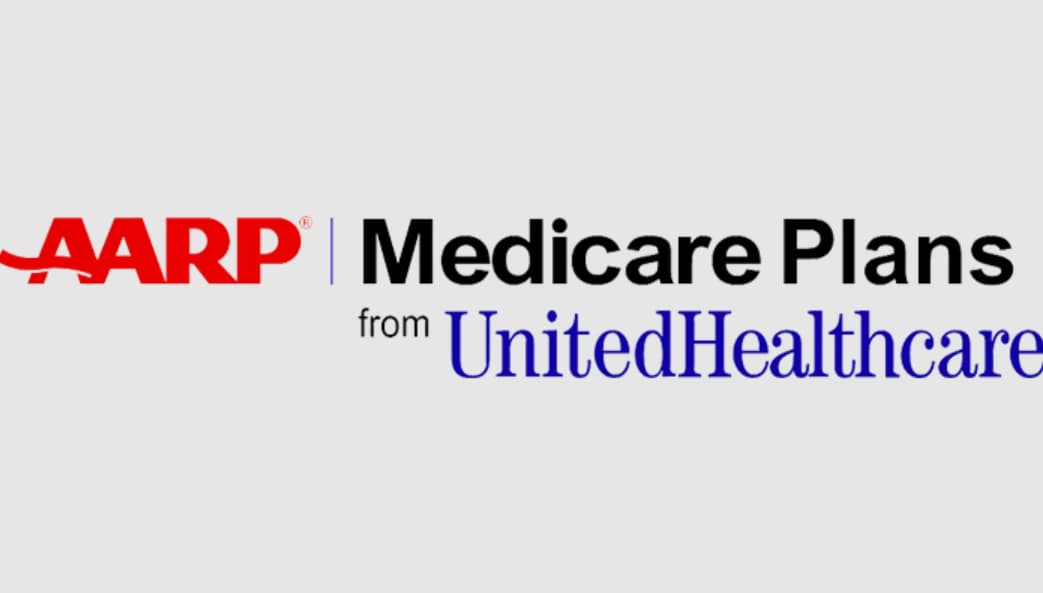Are you looking to take control of your healthcare and make the most of your Medicare coverage? MyAARPMedicare.com might be just the tool you need.
This online portal, designed for AARP Medicare plan members, offers a convenient way to manage your health benefits from the comfort of your home.
In this comprehensive guide, we’ll explore everything you need to know about MyAARPMedicare.com for 2024.
From logging in to your account to understanding the various AARP Medicare plans available, we’ll cover it all.
You’ll discover how to navigate the website, access your benefits, and make the most of the features offered.
Whether you’re a tech-savvy senior or new to online healthcare management, this guide will walk you through the process step-by-step.
We’ll also delve into the benefits of using MyAARPMedicare.com and how it can simplify your healthcare journey.
So, if you’re ready to unlock the full potential of your AARP Medicare plan and take advantage of all the online tools at your disposal, keep reading.
MyAARPMedicare

This guide will empower you to make informed decisions about your health and get the most out of your coverage in 2024 and beyond.
www.myaarpmedicare.com – My AARP Medicare Login [Complete Requirements]
To access your AARP Medicare account, you’ll need to meet the following requirements:
- Active AARP Medicare plan membership
- Computer, tablet, or smartphone with internet access
- Up-to-date web browser (Chrome, Firefox, Safari, or Edge)
- Valid email address
- Your AARP Medicare member ID number
- Personal information for identity verification
Steps to prepare for login:
- Gather your member ID card and personal information
- Ensure your device has a secure internet connection
- Update your web browser to the latest version
- Have your email address ready for account recovery if needed
My Aarpmedicare Login At www.myaarpmedicare.com
Follow these steps to log in to your MyAARPMedicare account:
- Open your web browser and go to www.myaarpmedicare.com
- Look for the “Sign In” or “Log In” button, usually located in the top right corner
- Click on the “Sign In” button to access the login page
- Enter your username or email address in the first field
- Type your password in the second field
- If there’s an option to “Remember Me,” consider checking it for convenience on personal devices
- Click the “Sign In” or “Log In” button to access your account
Remember to log out when finished, especially on shared devices.
www.myaarpmedicare.com – Myaarpmedicare Login – [Step by Step]
Here’s a detailed, step-by-step guide to logging into your MyAARPMedicare account:
- Open your preferred web browser
- Type www.myaarpmedicare.com in the address bar and press Enter
- Wait for the homepage to load completely
- Locate the “Sign In” or “Log In” button (usually in the top right corner)
- Click on the “Sign In” button
- On the login page, find the username/email field
- Enter your username or the email address associated with your account
- Move to the password field
- Type in your password (be careful of caps lock and special characters)
- If there’s a CAPTCHA verification, complete it as instructed
- Look for a “Remember Me” checkbox – decide if you want to use this feature
- Click the “Sign In” or “Log In” button
- Wait for the system to verify your credentials
- If successful, you’ll be directed to your account dashboard
- If unsuccessful, carefully check your username and password for errors
If you encounter any issues, look for error messages and follow any provided instructions.
Forgot your Login Username? Recover at www.myaarpmedicare.com
If you’ve forgotten your username, follow these steps to recover it:
- Go to www.myaarpmedicare.com
- Find and click on the “Sign In” button
- On the login page, look for a “Forgot Username?” or similar link
- Click on the “Forgot Username?” link
- You’ll be taken to a recovery page. Here, you’ll need to provide:
- Your AARP Medicare member ID number
- Your date of birth
- The last four digits of your Social Security number
- Enter this information in the appropriate fields
- Click “Submit” or “Recover Username”
- The system will verify your information
- If successful, you’ll receive your username via the email address on file
- Check your email inbox (and spam folder) for the recovery message
- Once you have your username, return to the login page and sign in
If you don’t receive the email or encounter issues, contact AARP Medicare customer support for assistance.
www.myaarpmedicare.com – Don’t Have a United Healthcare Patient Login Account? Register Here
To create a new MyAARPMedicare account, follow these registration steps:
- Visit www.myaarpmedicare.com
- Look for a “Register” or “Create Account” button and click it
- You’ll be taken to a registration page
- Provide your personal information:
- Full name
- Date of birth
- AARP Medicare member ID number
- The last four digits of your Social Security number
- ZIP code
- Create a username (follow any specific requirements provided)
- Create a strong password (typically requiring a mix of uppercase and lowercase letters, numbers, and symbols)
- Enter and confirm your email address
- Set up security questions and answers for account recovery
- Read and agree to the terms and conditions
- Click “Create Account” or “Register”
- You may receive a verification email – if so, click the link in the email to confirm your account
- Once verified, you can log in with your new username and password
Keep your login information secure and don’t share it with others.
www.MyAARPMedicare.com – How to Check Medicare Plan in Your Particular Area?
To find Medicare plans available in your area through MyAARPMedicare, follow these steps:
- Go to www.MyAARPMedicare.com
- Look for a “Find a Plan” or “Shop for Plans” section
- Click on the appropriate button to start your search
- Enter your ZIP code in the provided field
- Select your county if prompted (some ZIP codes span multiple counties)
- Indicate whether you receive Medicare and Medicaid benefits
- Enter your age or date of birth if requested
- Specify if you’re looking for a specific type of plan (e.g., Medicare Advantage, Prescription Drug Plan)
- Click “Search” or “Find Plans”
- Review the list of available plans in your area
- Use filters to narrow down options based on your preferences (e.g., monthly premium, deductible)
- Click on individual plans to view more details
- Compare multiple plans side by side if the option is available
- Save or print plan information for future reference
- If you’re ready to enroll, follow the provided enrollment instructions or contact a licensed insurance agent for assistance
Remember that plan availability and details may change annually, so it’s important to review your options during each enrollment period.
Understanding Medicare Basics
Before diving into UnitedHealthcare’s specific offerings, let’s review the basics of Medicare:
- Original Medicare: This is the federal government’s health insurance program, consisting of:
- Part A (Hospital Insurance)
- Part B (Medical Insurance)
- Medicare Advantage: Also known as Part C, these are plans offered by private insurance companies that combine Parts A and B, often with additional benefits.
- Prescription Drug Coverage: Part D plans help cover the cost of prescription medications.
- Medicare Supplement Insurance: Also called Medigap, these policies help pay for out-of-pocket costs not covered by Original Medicare.
Now that we’ve covered the fundamentals, let’s explore UnitedHealthcare’s Medicare options in detail.
UnitedHealthcare Medicare Advantage Plans (Part C)
Medicare Advantage plans, also known as Part C, are a popular choice for many Medicare beneficiaries. UnitedHealthcare offers a variety of Medicare Advantage plans with different features and benefits. Here’s what you need to know:
Key Features of UnitedHealthcare Medicare Advantage Plans:
UnitedHealthcare Medicare Advantage plans offer a one-stop solution for your healthcare needs. These plans combine the benefits of Original Medicare Parts A and B into a single package.
This means you get coverage for hospital stays, doctor visits, preventive care, and medical services all under one plan.
The comprehensive nature of these plans simplifies your healthcare management, as you don’t need to juggle multiple policies or providers for different aspects of your care.
Additional Benefits:
One of the most attractive features of UnitedHealthcare Medicare Advantage plans is the inclusion of extra benefits not covered by Original Medicare. These additional perks can significantly enhance your overall health and well-being:
- Dental care: Many plans offer coverage for routine dental check-ups, cleanings, and sometimes even more extensive dental work. This helps maintain your oral health, which is crucial for overall wellness.
- Vision coverage: Regular eye exams and coverage for glasses or contact lenses are often included, helping you maintain good vision as you age.
- Hearing aids: Hearing aid coverage can be a substantial benefit, as these devices can be expensive but are essential for many seniors.
- Fitness programs: Programs like SilverSneakers give you access to gyms and fitness classes, encouraging an active lifestyle and social engagement.
- Over-the-counter (OTC) allowances: Some plans provide a monthly or quarterly allowance for OTC health-related items, helping you save on everyday health expenses.
These additional benefits can lead to significant cost savings and improved quality of life for many Medicare beneficiaries.
Prescription Drug Coverage:
Most UnitedHealthcare Medicare Advantage plans include Part D prescription drug coverage. This integration means you don’t need to purchase a separate drug plan, simplifying your coverage and potentially lowering your overall costs. The drug coverage typically includes a tiered formulary, where different types of drugs are covered at different levels, allowing for more predictable medication expenses.
Low Premiums:
UnitedHealthcare offers Medicare Advantage plans with premiums as low as $0 per month in many areas. This can make comprehensive health coverage more accessible and affordable for many seniors. However, it’s important to note that even with a $0 premium, you’ll still be responsible for your Part B premium and any copayments or coinsurance required by the plan.
Network Restrictions:
Most UnitedHealthcare Medicare Advantage plans use a network of healthcare providers. While this can limit your choice of doctors and hospitals, it also helps keep costs down. Using in-network providers typically results in lower out-of-pocket costs. Some plans, like PPOs, offer more flexibility to see out-of-network providers, but usually at a higher cost.
Annual Out-of-Pocket Maximum:
Unlike Original Medicare, UnitedHealthcare Medicare Advantage plans include an annual out-of-pocket maximum. This cap on your yearly healthcare expenses provides financial protection and peace of mind. Once you reach this limit, the plan pays 100% of covered services for the rest of the year, helping to make your healthcare costs more predictable and manageable.
Types of UnitedHealthcare Medicare Advantage Plans:
- Health Maintenance Organization (HMO) Plans:
- Require you to choose a primary care physician (PCP)
- Need referrals to see specialists
- Limited to in-network providers except in emergencies
- Preferred Provider Organization (PPO) Plans:
- More flexibility in choosing providers
- Can see out-of-network doctors (usually at a higher cost)
- Don’t require referrals for specialists
- Special Needs Plans (SNPs):
- Designed for people with specific diseases or characteristics
- Tailored benefits, provider choices, and drug formularies
- Private Fee-for-Service (PFFS) Plans:
- Determine how much they’ll pay providers and how much you must pay
- May or may not have a network of providers
When considering a UnitedHealthcare Medicare Advantage plan, it’s crucial to review the specific benefits, network restrictions, and costs associated with each plan in your area.
UnitedHealthcare Medicare Supplement Insurance Plans (Medigap)
For those who prefer the flexibility of Original Medicare but want help with out-of-pocket costs, UnitedHealthcare offers Medicare Supplement Insurance plans, also known as Medigap.
Key Features of UnitedHealthcare Medigap Plans:
- Works with Original Medicare: These plans supplement your existing Medicare Part A and B coverage.
- Standardized Plans: Medigap plans are standardized across insurance companies, making it easier to compare options.
- No Network Restrictions: You can see any doctor or hospital that accepts Medicare patients.
- Predictable Costs: Many Medigap plans cover most or all of your Medicare deductibles and coinsurance.
- Guaranteed Renewable: As long as you pay your premiums, your coverage cannot be canceled due to health problems.
UnitedHealthcare Medigap Plan Options:
UnitedHealthcare offers several Medigap plan types, including popular options like Plan F, Plan G, and Plan N. Each plan offers a different level of coverage:
- Plan F: Offers the most comprehensive coverage, paying for all Medicare-approved costs not covered by Parts A and B. (Note: Plan F is only available to those eligible for Medicare before January 1, 2020.)
- Plan G: Similar to Plan F, but you pay the Part B deductible yourself.
- Plan N: Offers lower premiums in exchange for some cost-sharing, including copayments for certain office and emergency room visits.
When choosing a Medigap plan, consider your health needs, budget, and how much predictability you want in your healthcare costs.
UnitedHealthcare Prescription Drug Plans (Part D)
If you have Original Medicare or a Medigap plan, you’ll need separate coverage for prescription drugs. UnitedHealthcare offers standalone Part D plans to help cover these costs.
Key Features of UnitedHealthcare Part D Plans:
- Varied Coverage: Different plans cover different medications, so it’s important to check if your prescriptions are included.
- Tiered Pricing: Drugs are typically grouped into tiers, with lower tiers costing less.
- Pharmacy Networks: Plans often have preferred pharmacies where you can get lower copays.
- Mail-Order Option: Many plans offer the convenience of home delivery for regular prescriptions.
- Coverage Gap Protection: Some plans offer additional coverage during the “donut hole” phase of Part D coverage.
When selecting a Part D plan, review the plan’s formulary (list of covered drugs) and make sure it includes your current medications. Also, consider the plan’s pharmacy network and whether it includes your preferred pharmacies.
UnitedHealthcare Dual Special Needs Plans (D-SNPs)
For individuals who qualify for both Medicare and Medicaid, UnitedHealthcare offers Dual Special Needs Plans (D-SNPs).
Key Features of UnitedHealthcare D-SNPs:
- Comprehensive Coverage: These plans combine Medicare and Medicaid benefits into one coordinated plan.
- Extra Benefits: Many D-SNPs offer additional perks beyond Original Medicare, such as dental, vision, and hearing coverage.
- Low or No Premiums: Most D-SNPs have $0 premiums for those who qualify.
- Care Coordination: These plans often provide personalized care coordination to help manage complex health needs.
- Prescription Drug Coverage: D-SNPs include Part D prescription drug coverage.
To be eligible for a D-SNP, you must qualify for both Medicare and Medicaid in your state. The specific benefits and eligibility requirements can vary by state and plan.
Choosing the Right UnitedHealthcare Medicare Plan
With so many options available, selecting the right UnitedHealthcare Medicare plan can seem daunting.
Here are some factors to consider:
- Your Health Needs: Consider your current health status and any ongoing medical conditions.
- Your Budget: Look at premiums, deductibles, copayments, and out-of-pocket maximums.
- Your Preferred Doctors and Hospitals: Check if your preferred providers are in-network for the plans you’re considering.
- Prescription Drug Needs: If you take regular medications, make sure they’re covered by the plan’s formulary.
- Additional Benefits: Consider which extra perks (like dental or vision coverage) are important to you.
- Travel Plans: If you spend significant time in different parts of the country, look for plans with nationwide coverage.
- Future Health Considerations: Think about potential health needs in the coming years, not just your current situation.
To get personalized help choosing a plan, you can:
- Use UnitedHealthcare’s online plan finder tool
- Speak with a licensed insurance agent
- Attend a local UnitedHealthcare Medicare informational meeting
Remember, you can change your Medicare coverage during the Annual Enrollment Period (October 15 – December 7) each year, so you’re not locked into one plan forever.
Enrolling in a UnitedHealthcare Medicare Plan
Once you’ve chosen a plan, the enrollment process is relatively straightforward. You can enroll:
- Online through the UnitedHealthcare website
- By phone with a UnitedHealthcare representative
- Through a licensed insurance agent
- By mail using a paper application
Be prepared to provide your Medicare number and the dates your Part A and/or Part B coverage started.
Key Enrollment Periods:
- Initial Enrollment Period (IEP): This 7-month period begins 3 months before the month you turn 65 and ends 3 months after.
- Annual Enrollment Period (AEP): October 15 – December 7 each year. You can join, switch, or drop a Medicare Advantage or Part D plan during this time.
- Medicare Advantage Open Enrollment Period: January 1 – March 31 each year. If you’re already in a Medicare Advantage plan, you can switch to a different one or go back to Original Medicare.
- Special Enrollment Periods (SEPs): These are triggered by certain life events, like moving or losing other coverage.
Managing Your UnitedHealthcare Medicare Plan
Once you’re enrolled in a UnitedHealthcare Medicare plan, it’s important to understand how to manage your coverage effectively.
Using Your Benefits:
- Understanding Your Coverage: Familiarize yourself with your plan’s Evidence of Coverage (EOC) document, which outlines what services are covered and what you’ll pay.
- Finding In-Network Providers: Use UnitedHealthcare’s online provider directory to find doctors, hospitals, and other healthcare providers in your plan’s network.
- Prescription Drug Coverage: If your plan includes drug coverage, check the formulary to see which tier your medications are on and what your copayments will be.
- Preventive Services: Take advantage of covered preventive services, like annual wellness visits and cancer screenings.
- Additional Benefits: Don’t forget to use any extra benefits your plan offers, such as fitness programs or over-the-counter allowances.
Paying Medicare Premiums Plans:
UnitedHealthcare offers several options for paying your Medicare plan premiums:
- Online Payments:
- Use QuickPay for one-time payments without registering an account
- Set up automatic payments through your myUHCMedicare.com account
- Automatic Bank Withdrawals: Set up Electronic Funds Transfer (EFT) from your checking account
- Social Security Deduction: Have your premium automatically deducted from your Social Security or Railroad Retirement Board benefit check
- Mail: Pay by check or money order using the monthly bill UnitedHealthcare sends you
Choose the payment method that’s most convenient for you and ensures you never miss a payment.
Customer Service and Support
UnitedHealthcare provides various resources to help you manage your Medicare plan:
- Online Account: Create an account on myUHCMedicare.com to view your plan details, find providers, and manage your benefits.
- Mobile App: Download the UnitedHealthcare app for on-the-go access to your plan information.
- Customer Service: Call the number on your member ID card for help with claims, finding providers, or understanding your benefits.
- Nurse Line: Many plans offer 24/7 access to a nurse line for health-related questions.
- Care Coordination: Some plans, especially D-SNPs, provide personalized care coordination services.
Reviewing and Changing Your Coverage
It’s important to review your Medicare coverage annually to ensure it still meets your needs. Here are some key considerations:
- Annual Notice of Change (ANOC): Review this document, sent each fall, which outlines any changes to your plan for the coming year.
- Assess Your Needs: Consider any changes in your health, medications, or financial situation.
- Compare Plans: Use the Medicare Plan Finder tool or speak with a UnitedHealthcare representative to compare your current plan with other options.
- Make Changes During AEP: If you decide to switch plans, make your changes during the Annual Enrollment Period (October 15 – December 7).
Also Check:
Conclusion
UnitedHealthcare offers a wide range of Medicare options to suit various needs and preferences.
Whether you’re looking for the comprehensive coverage of a Medicare Advantage plan, the flexibility of a Medigap policy, or the targeted benefits of a D-SNP, there’s likely a UnitedHealthcare plan that fits your needs.
Remember, choosing and managing your Medicare coverage is an ongoing process.
Stay informed about your benefits, review your coverage annually, and don’t hesitate to reach out to UnitedHealthcare or a licensed insurance agent if you have questions or need assistance.
By understanding your options and actively managing your coverage, you can make the most of your UnitedHealthcare Medicare plan and ensure you have the health coverage you need to live your best life.



